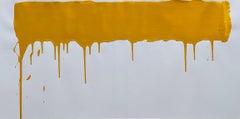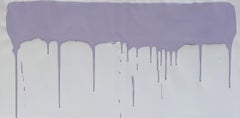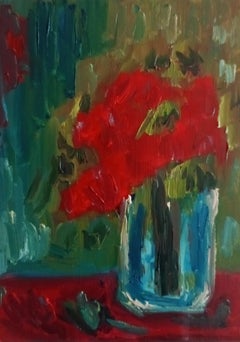Ai Weiwei Paintings
Ai Weiwei was born in northwest China but was sent to a labor camp in Beidahuang, Heilongjiang, when he was only a year old. There he was raised for the early years of his life. His father Aì Qīng’s involvement in the Anti-Rightist Movement led to the family's exile shortly afterward to Shihezi, Xinjiang, where Ai spent the duration of his childhood. Upon Mao Zedong’s death, the family returned to Beijing in 1976.
Following the family’s return home, Ai enrolled in the Beijing Film Academy to study animation in 1978. He was one of the founders of the avant-garde art group the Stars alongside contemporaries Ma Desheng, Wang Keping, Mao Lizi, Huang Rui, Li Shuang, Ah Cheng and Qu Leilei. The Stars disbanded in the 1980s, but Ai participated in regular shows that recalled the ten years that the group had been together, including at the Hanart Gallery in 1989 and the retrospective 2007 exhibition at Beijing's Origin Point.
Ai moved to the USA in 1981, among the earliest of students to study abroad following China’s reform in 1980, which afforded him the opportunity to take the TOEFL in 1981. He lived in Philadelphia and then in San Francisco, studying English at the University of California, Berkeley. Afteward, Ai studied at Parsons School of Design in New York City and attended the Art Students League of New York from 1983 to 1986. He initially made a living by drawing street portraits.
Immersing himself in the Pop art scene, which was rapidly gaining popularity, Ai began creating conceptual art and photography. Ai returned to China after his father became ill in 1993, and while there he helped to establish the experimental art scene called Beijing East Village. In 1999, Ai built a studio house in Beijing — his first architectural project. Ai founded the architecture studio FAKE Design in 2003, and co-curated the art exhibition "Fuck Off" with Feng Boyi in Shanghai.
In 2011, Ai was arrested and jailed. Released after 81 days, the government confiscated his passport. His release was in part due to the uproar of the art world against his charges of tax evasion; the Solomon R. Guggenheim Foundation and the International Council of Museums both organized petitions, collecting almost 100,000 signatures calling for his release. When he reclaimed his passport in 2015, Ai moved to Berlin and lived in a studio. It became a base for him to create his international work.
Ai is the artistic director of China Art Archives & Warehouse. The experimental gallery and archive, co-founded by Ai in 1997, concentrates on experimental art from the People’s Republic of China, initiating and facilitating exhibitions both in China and internationally.
Ai's work is in the collections of museums worldwide, including the Tate, London; Arken, London; Brooklyn Museum, New York; and the RA, London. His international architectural collaborations, including the Beijing National Stadium and the Serpentine Gallery Pavilion, have consistently been met with critical acclaim.
Find a variety of authentic Ai Weiwei prints, paintings and other art today on 1stDibs.
2010s Ai Weiwei Paintings
Paint
2010s Abstract Ai Weiwei Paintings
Paint, Paper
2010s Ai Weiwei Paintings
Paint
2010s Ai Weiwei Paintings
Paint
2010s Photorealist Ai Weiwei Paintings
Oil, Canvas
2010s Abstract Impressionist Ai Weiwei Paintings
Paper, Oil
16th Century Old Masters Ai Weiwei Paintings
Ink, Gouache, Pen
21st Century and Contemporary Abstract Ai Weiwei Paintings
Wax, Oil, Archival Paper
21st Century and Contemporary Abstract Expressionist Ai Weiwei Paintings
Paper, Watercolor, Pencil, Color Pencil
20th Century Modern Ai Weiwei Paintings
Gouache, Paper
Late 20th Century Abstract Ai Weiwei Paintings
Paper, Ink, Gouache
2010s Abstract Impressionist Ai Weiwei Paintings
Paper, Oil
Mid-17th Century Baroque Ai Weiwei Paintings
Copper
21st Century and Contemporary Photorealist Ai Weiwei Paintings
Acrylic, Board
21st Century and Contemporary Photorealist Ai Weiwei Paintings
Canvas, Oil
Irina TrushkovaFlorence -original still life painting-original realism still life oil painting, 2023
21st Century and Contemporary Abstract Ai Weiwei Paintings
Wax, Oil, Archival Paper
Ai Weiwei paintings for sale on 1stDibs.
Artists Similar to Ai Weiwei
- Does Ai Weiwei paint?1 Answer1stDibs ExpertApril 5, 2022Yes, Ai Weiwei does paint. While Ai Weiwei is known more for his poetry, sculpture and photography, he did occasionally paint and use paint in his sculptural work. Ai Weiwei is known for his activism and his artwork often encapsulated his political leanings. Shop a selection Ai Weiwei works on 1stDibs.
- 1stDibs ExpertApril 5, 2022What Ai Weiwei's art represents depends on the piece. Some of the Chinese artist's works seem to symbolize how the Chinese Community party stripped away individuality and demanded conformity. Many of his pieces communicate messages about various human rights violations. Shop a range of Ai Weiwei art on 1stDibs.
- 1stDibs ExpertFebruary 13, 2024Ai Weiwei made Sunflower Seeds to provide a political critique. During his childhood, the Chinese artist frequently saw propaganda posters depicting Mao Zedong, founder of the Chinese Communist Party, as the sun and the citizens of China as sunflowers thriving beneath his rays. His installation featuring 100 million individually handmade sunflower seeds symbolized the poverty that the artist experienced while growing up in Communist China and the reduction of people as individuals / the grouping of individual human beings into a mass that occurred under Communist rule. Shop a collection of Ai Weiwei art on 1stDibs.




